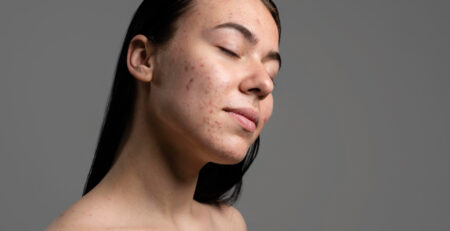Carbuncle
What is a carbuncle?
Boils are bacterial infections that start at a hair follicle under the skin. A carbuncle is a group of boils with more than one pus-filled “head.” They are sore and hurt, and they can lead to a serious infection that could leave a scar. A staph skin infection is another name for a carbuncle.
Distinguishing a carbuncle from other skin problems
The first sign of a carbuncle is a red, itchy lump under the skin. It might hurt to touch. It can be as small as a lentil or as big as a medium-sized mushroom.
Over the course of a few days, the lump gets bigger as pus quickly fills it up. It will grow a yellow-white tip or “head” that will break and let the pus out. There may also be swelling in areas close by.
Some other signs could be:
- itching before the lump appears
- bodily aches
- fatigue
- fever and chills
- skin crustiness or oozing
Pus usually comes out of a carbuncle within a day.
What are the causes of a carbuncle?
Most carbuncles happen when bacteria called Staphylococcus aureus get into your hair follicles. “Staph” is another name for these germs. When your skin is cut or otherwise broken, it’s easy for bacteria to get in and cause an infection. This can cause pus-filled boils or carbuncles, which are a group of boils.
This infection is most likely to happen in the moist parts of your body, where bacteria like to live. Most carbuncles are on the back of the neck, the shoulders, or the thigh. They can also show up on your face, neck, armpits, buttocks, and any other place where you sweat or rub.
What are the risk factors for developing a carbuncle?
If you are close to someone who has a carbuncle, you are more likely to get one yourself. The chance of getting a carbuncle is also raised by the following:
- poor hygiene
- diabetes
- a weak immune system
- dermatitis
- kidney disease
- liver disease
- shaving and other activities that break the skin
How is a carbuncle diagnosed?
Most of the time, your doctor can tell if you have a carbuncle just by looking at your skin. Lab tests may also be done on a sample of pus.
Keeping track of how long you’ve had the carbuncle is important. If it’s been going on for more than two weeks, you should see a doctor. You should also say if you’ve ever had the same symptoms.
If you keep getting carbuncles, it could be a sign of something else wrong with your health, like diabetes. Your doctor may want to check your overall health by looking at your urine or blood.
How is a carbuncle treated?
There are a number of ways to treat a carbuncle. First, you should look at your carbuncle:
- Is it more than 2 inches long?
- Is it close to your nose or eyes or on your face?
- Is it near your back?
- Is it getting worse quickly?
- Has it not gotten better in two weeks?
If you said yes to any of these questions, you should see a doctor. The infection you have could lead to bigger problems.
Medical treatment
Your doctor may use one or more of the following medical treatments to heal your carbuncle:
Antibiotics. These are taken orally or applied to your skin.
- Pain relievers. Over-the-counter medications are typically sufficient.
- Antibacterial soaps. These may be suggested as part of your daily cleaning regimen.
- Surgery. Your doctor may drain deep or large carbuncles with a scalpel or needle.
Never try to get rid of a carbuncle on your own. There is a chance that you will spread the disease. You might also get an infection in your blood.
Home care
To ease your pain, help you get better faster, and make it less likely that the infection will spread:
- Several times a day, put a clean, warm, wet cloth on your carbuncle. Don’t touch it for 15 minutes. This will make it drain more quickly.
- Use soap that kills germs to keep your skin clean.
- If you’ve had surgery, you’ll need to change your bandages often.
- If you touch your carbuncle, wash your hands.
What is the long-term outlook?
Carbuncles usually heal well when treated by a doctor. In some cases, they may get better without help from a doctor.
If you get sick once, you might get sick again in the future. If this happens, you should see a doctor. It could be a sign of something worse going on with your health.
Preventing a carbuncle
Carbuncles are less likely to happen if you take care of yourself. Follow these tips to stay safe:
- Before you eat and after you go to the bathroom, wash your hands.
- Take showers often to keep bacteria off your skin.
- Avoid squeezing boils or rubbing any broken skin.
- Use hot water to wash your clothes, sheets, and towels as often as you can.
If you think you have a long-term illness or other skin problem that might be causing your skin to break, you should see a doctor.








Leave a Reply